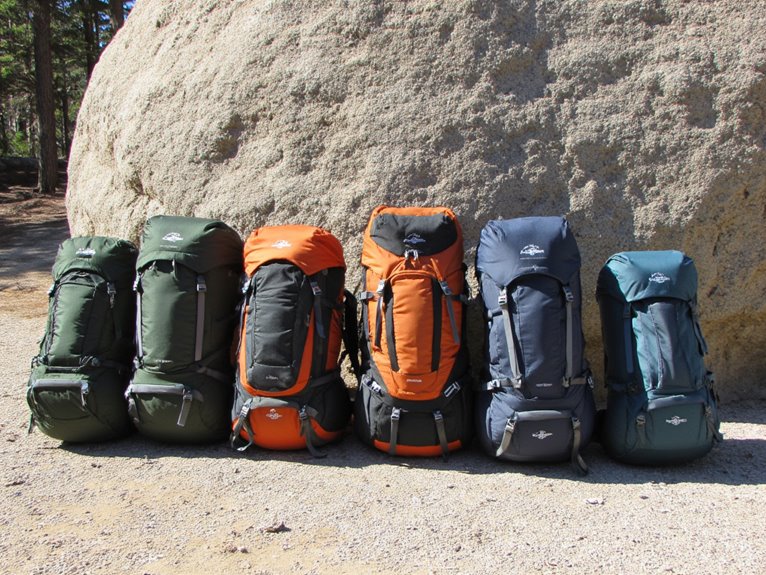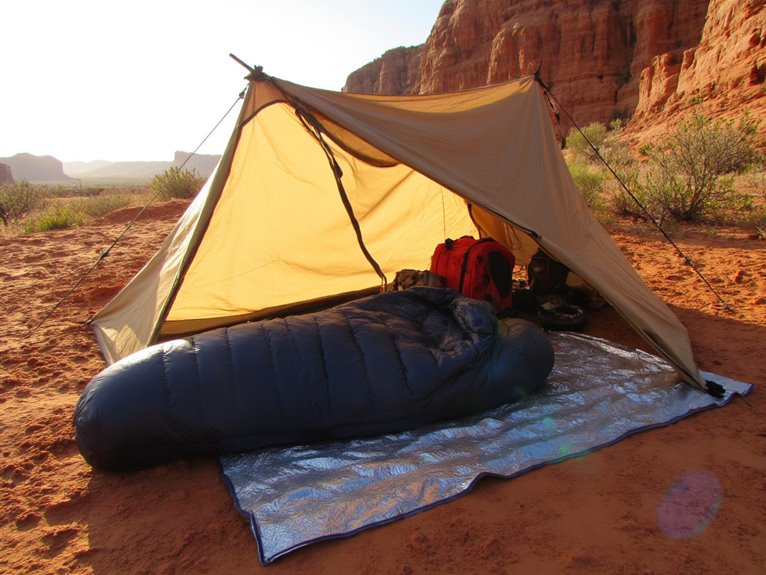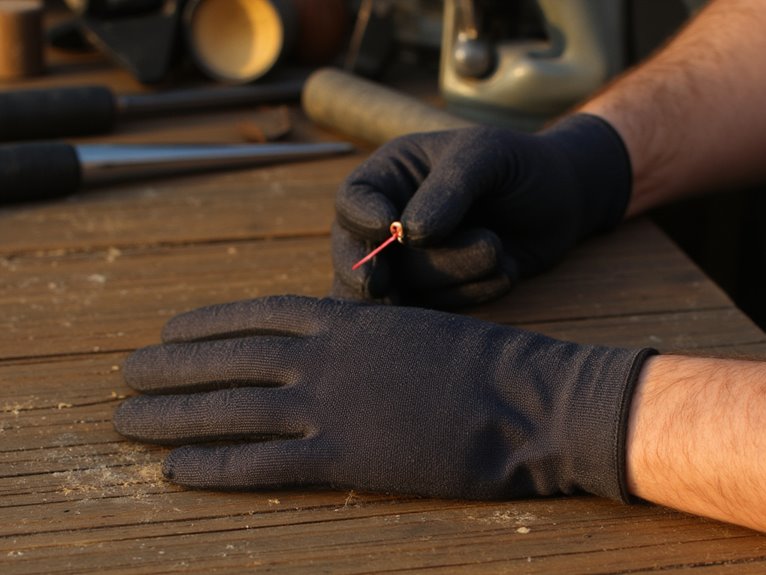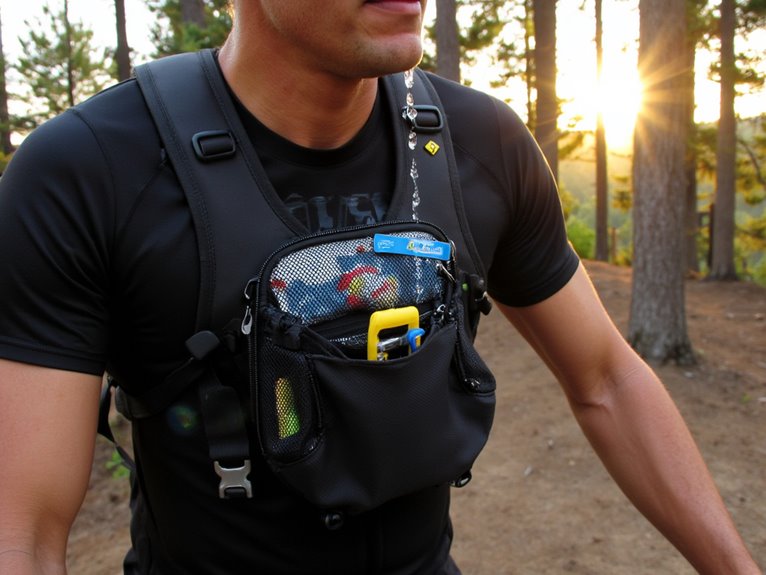What Is Webbing for Hiking?
Webbing is a type of outdoor gear essential for hiking, camping, and climbing, constructed from durable materials such as nylon, polyester, or Dyneema, chosen for their exceptional strength-to-weight ratio, resistance to abrasion, and ability to withstand harsh outdoor conditions. It comes in various types, including climbing webbing, flat webbing, and tubular webbing, each with its unique benefits and applications. Understanding the properties and uses of webbing is vital for hikers to make informed decisions about their gear. As you venture further into the world of webbing, you'll discover the importance of proper selection, maintenance, and safety practices to guarantee a secure and enjoyable hiking experience.
We are supported by our audience. When you purchase through links on our site, we may earn an affiliate commission, at no extra cost for you. Learn more. Last update on 22nd December 2025 / Images from Amazon Product Advertising API.
What Is Webbing Made Of?
Webbing, a critical component of hiking gear, is typically constructed from durable, high-strength materials such as nylon, polyester, or Dyneema. These materials are chosen for their exceptional strength-to-weight ratio, resistance to abrasion, and ability to withstand harsh outdoor conditions. Nylon, a popular choice, offers excellent durability and resistance to UV degradation. Polyester, another common material, provides a high level of strength and resistance to stretching. Dyneema, a ultra-high molecular weight polyethylene, is renowned for its exceptional strength, low stretch, and resistance to abrasion. By selecting high-quality materials, manufacturers can guarantee that their webbing products meet the demanding requirements of hikers and outdoor enthusiasts.
Types of Webbing for Hiking
In terms of hiking, selecting the right type of webbing is vital for safety and performance. Climbing webbing, flat webbing, and tubular webbing are the three primary categories, each with its unique characteristics and applications. Understanding the benefits and uses of each type is essential for hikers to make informed decisions about their gear in regards to.
Climbing Webbing Uses
In addition to its primary function as a climbing aid, webbing can be repurposed in various ways to improve safety and convenience during hiking excursions. For instance, it can be used as a makeshift towline or anchor point in emergency situations. Climbing webbing can also serve as a sturdy material for creating a makeshift shelter or windbreak. Additionally, it can be used to secure gear or create a makeshift pulley system. In this way, it can also be used to improvise a solution in unexpected situations. By repurposing climbing webbing in these ways, hikers can increase their safety margin and adapt to unexpected situations. By understanding the various uses of climbing webbing, hikers can maximize its utility and prepare for a wider range of scenarios.
Flat Webbing Benefits
Among the various types of webbing available for hiking, flat webbing stands out for its unique benefits, including its lightweight and compact design, making it an ideal choice for hikers seeking to minimize their gear weight while maintaining reliability. Flat webbing is also highly versatile, allowing for a range of applications, from creating makeshift anchors to securing gear. Additionally, its flat profile reduces the risk of snagging or catching on surrounding objects, making it an excellent option for hikers traversing dense or rocky terrain. Overall, flat webbing's blend of functionality, durability, and portability makes it an excellent addition to any hiking kit.
Tubular Webbing Options
Tubular webbing, characterized by its cylindrical shape, offers a distinct set of benefits and applications that differentiate it from flat webbing, making it a valuable addition to a hiker's toolkit. One of the primary advantages of tubular webbing is its increased strength-to-weight ratio, allowing it to withstand heavier loads while remaining lightweight and compact. Additionally, tubular webbing is less prone to tangling and twisting, making it easier to manage and deploy. This type of webbing is particularly useful for creating anchor points, setting up rappel systems, and creating makeshift pulleys. When choosing tubular webbing, look for options with durable materials, such as nylon or polyester, and consider the specific load capacity and water resistance required for your hiking needs.
How Webbing Is Used Safely
When venturing into webbing for hiking, proper safety protocols must be followed to guarantee a secure and enjoyable experience. Before setting out, inspect the webbing for signs of wear, damage, or deterioration, and retire any compromised equipment. In the context of anchoring, choose sturdy trees or rocks, and confirm the webbing is properly secured. Always maintain a safe distance from cliffs, steep slopes, and other hazards. During river or stream crossings, use a secure anchor point and a reliable crossing method. Stay alert and aware of your surroundings, and be prepared for changing weather conditions. By following these guidelines, you can minimize risks and maximize the enjoyment of your hiking adventure.
Webbing Vs Climbing Ropes Compared
When considering webbing versus climbing ropes for hiking, it's essential to understand the fundamental differences between these two options. Key material differences, such as webbing's flat, woven construction versus climbing ropes' braided or twisted design, substantially impact their performance. A critical comparison of their load-bearing capacity is also necessary to guarantee the safety and reliability of the chosen equipment.
Key Material Differences
Material selection is critical in outdoor gear, as it profoundly impacts the performance, durability, and safety of webbing and climbing ropes. Webbing, typically made from nylon or polyester, is preferred for its high strength-to-weight ratio, resistance to abrasion, and water resistance. Climbing ropes, on the other hand, are often constructed from kernmantle ropes, which feature a durable outer sheath and a shock-absorbing core. While both webbing and climbing ropes are designed for load-bearing applications, their material properties differ substantially. Webbing is better suited for anchoring, creating adjustable loops, and securing gear, whereas climbing ropes are optimized for dynamic loading and shock absorption. Understanding these material differences is essential for selecting the right gear for your hiking or climbing adventure.
Load-Bearing Capacity
In respect to load-bearing capacity, a critical distinction emerges between webbing and climbing ropes, with each exhibiting unique characteristics that dictate their respective applications. Webbing, typically made from nylon or polyester, is designed to absorb shock loads and distribute force evenly, making it suitable for anchoring and creating a secure attachment point. Climbing ropes, on the other hand, are designed to absorb dynamic forces and are thus more suitable for rappelling, climbing, and rescue applications.
- Webbing is often used in applications where a fixed anchor point is required, such as in rescue scenarios or while setting up a belay station.
- Climbing ropes are designed to absorb dynamic forces and are thus more suitable for rappelling, climbing, and rescue applications.
- When it comes to load-bearing capacity, it's crucial to choose the right tool for the job to ensure safety and reliability.
Choosing the Right Webbing Size
Selecting the ideal webbing size is crucial to guarantee a comfortable and secure hiking experience, as it directly impacts the fit, functionality, and overall performance of your gear. When choosing the right webbing size, consider the specific application, such as climbing, backpacking, or camping. Measure the area where the webbing will be used, taking into account any obstacles or constraints. Webbing sizes typically range from 1-3 inches in width, with varying lengths. Consider the weight capacity and durability requirements for your specific use case. It's essential to balance size with functionality, providing a snug fit without compromising mobility or accessibility. By selecting the correct webbing size, you can guarantee a safe, comfortable, and enjoyable hiking experience.
Webbing Care and Maintenance Tips
Proper care and maintenance of webbing equipment is crucial to prolong its lifespan, guarantee reliability, and prevent accidents. Neglecting webbing care can lead to severe consequences, including equipment failure and even injuries. To ensure your webbing remains in top condition, follow these essential care and maintenance tips:
- Regularly inspect webbing for signs of wear and tear, such as fraying, cuts, or abrasion.
- Clean webbing with mild soap and lukewarm water to prevent dirt and debris buildup.
- Store webbing in a cool, dry place, away from direct sunlight and moisture.
Common Webbing Mistakes to Avoid
Many hikers and outdoor enthusiasts unwittingly shorten the lifespan of their webbing equipment by committing simple yet critical mistakes. One common error is neglecting to inspect webbing for signs of wear, such as fraying or damaged stitching. Another mistake is using webbing beyond its recommended load capacity, which can lead to sudden failure. Additionally, improper storage, such as folding or creasing webbing, can cause damage to the material. Moreover, using webbing in harsh environments without proper protection can lead to accelerated degradation. By being mindful of these common mistakes, hikers and outdoor enthusiasts can prolong the lifespan of their webbing equipment and guarantee a safe and enjoyable outdoor experience.
When to Replace Your Webbing
When to Replace Your Webbing
Webbing that exhibits visible signs of wear, such as fraying, cracks, or broken threads, should be replaced immediately to guarantee safety and prevent accidents. Ignoring these signs can lead to equipment failure, putting you and others at risk.
- Don't wait until it's too late: Replacing your webbing on time can be the difference between a safe hike and a disastrous one.
- Remember, safety is paramount: Your webbing is only as strong as its weakest point, so don't take any chances.
- Stay vigilant and proactive: Regularly inspect your webbing and replace it at the first sign of wear to guarantee a safe and enjoyable hiking experience.
Best Practices for Webbing Use
To guarantee peak performance and safety, it's vital to understand the best practices for webbing use, as improper utilization can lead to equipment failure and accidents. Always inspect your webbing before each use, checking for signs of wear, damage, or degradation. Guarantee proper storage and handling to prevent kinking, twisting, or tangling. When setting up anchors or securing loads, follow established knots and hitches, and maintain a consistent tension. Avoid over-tightening, as this can cause damage or failure. Regularly clean and condition your webbing to prevent degradation. By adhering to these best practices, you can guarantee reliable performance and minimize the risk of accidents, making your hiking and climbing experiences safer and more enjoyable.





